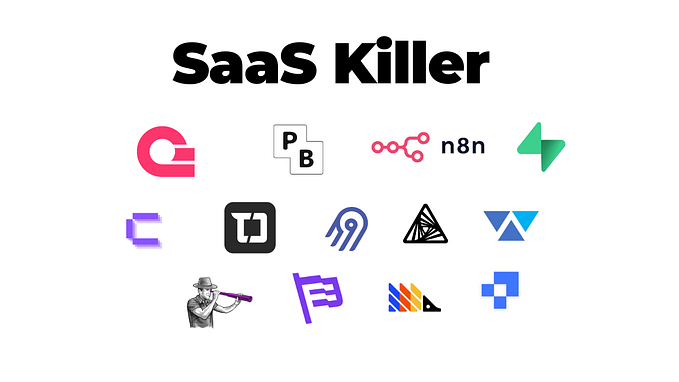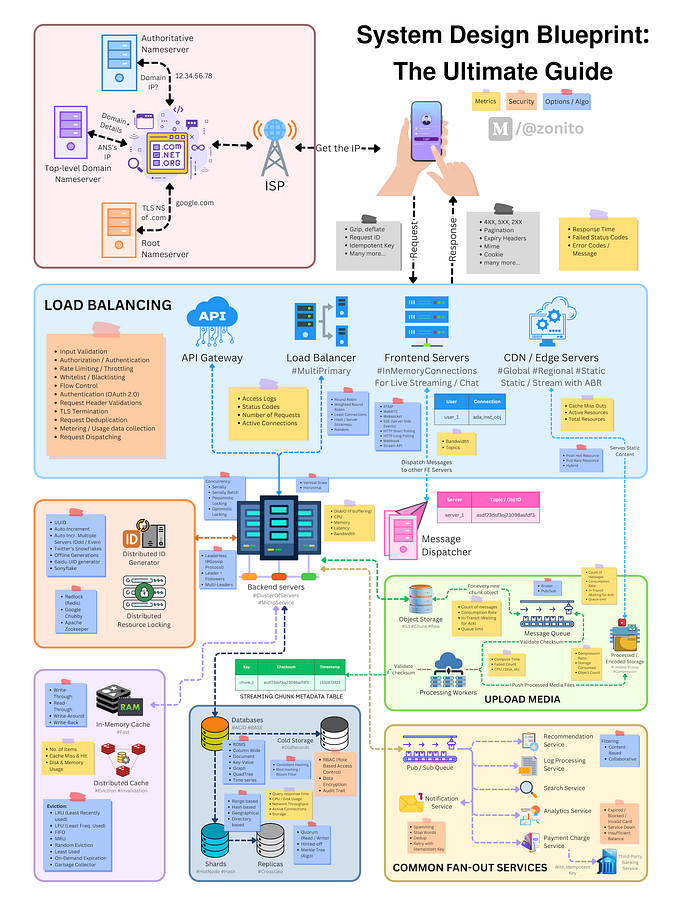The Lean Startup Summary for those in a hurry

If you are into the world of digital businesses, you have certainly already heard about “the startup way of doing things”. If you didn’t, it’s basically a lean way of creating and managing businesses, very different from what large enterprises do.
After so much talk about startups, Eric Ries’ famous book — The Lean Startup — has become a sort of mandatory reading for anyone wanting to venture out as an entrepreneur.
And even if you don’t want to create your own business, you can still be an entrepreneur inside your own team and aim to innovate inside your own field. Having such initiative has become even more valuable in times of uncertainty and remote work.
However, creating a business or innovation sector is no easy endeavor. Thousands of things to learn, anxiety to keep at bay and tons of pressure permeate the process. So I bet a little help reading the book or quickly revisiting its concepts is welcome, right?
So here goes The Lean Startup Summary for those in a hurry:
Where did the lean startup come from
The model originates from Eric Ries’ personal experiences, not only in a company where he was in charge of the product, IMVU, but also on several consultancies which the author performed after that.
Despite sounding completely innovative, he uses diverse techniques and methodologies well known to the market, such as Business Model Canvas, Agile Methodologies and Continuous Deployment.
The main objective of the lean methodology is to enable a startup, large or small, to find out what it should make — what the customers want and are willing to pay for — as fast as possible.
To discover this, it’s necessary to constantly interact with the customer, have a great vision and also lots of perseverance — hence the “build-measure-learn” loop.
“The stories in the magazines are lies: hard work and perseverance don’t lead to success”
The great mistake about building perfect products

Have you ever witnessed a digital product fail miserably and put the blame on either its flawed technology or horrible user interface/experience?
Sorry to inform you, but it’s exactly this kind of thought that can sink a product into failure. While a product isn’t solving a real pain for customers, there’s no technology or UX perfection that will convince people to use it — they won’t need to or want to.
In fact, before being perfect, products need to go through a validation process with the least effort possible. If nothing else, in a scenario where you cannot even predict what will happen next month, spending time and money in something likely to go sideways is a huge mistake.
To reduce the risk of failure in innovative companies, you need to apply an adequate management and thinking model which allows you to effectively look at users, test ideas and learn fast, without wasting time and money where it is, at least for now, unnecessary.
In the end, what really brings products to success is knowing how to look into the future and having the tools and skills to understand which parts of your plan are going well or bad.
Lean Startup Principles
1. Startups are not limited to small businesses. They’re about learning how to develop a sustainable business. You can apply startup principles to cells that create new products under conditions of extreme uncertainty, inside big corporations.
2. A startup isn’t only about the product being developed, it’s also about management and administration. Avoiding having any process or bureaucracies necessary for providing good service only leads the company to chaos.
3. The main activity of a startup is having ideas for new products, measuring customer reactions and learning whether it’s necessary to persevere or to pivot (change the business course).
4. People must feel responsible for the startup’s results and its activities must always be very well prioritized. Each employee must have a clear role and have their knowledge and creativity put to good use.
5. Building in small batches and having faster delivery cycles. Sounds counterintuitive, mainly because we’re already accustomed to production line models. Yet production is faster and more efficient when focused in a single, small batch at a time, additionally granting higher quality and faster learning.
7. Producing only when necessary, the famous just-in-time (JIT) production, and keeping a reduced, controlled stock. Smaller stocks induce fewer costs and risks, so maintain a minimum stock and replace only when it is used.
8. Not losing the vision you pursue. It will be the north of all your decisions and should be the reason behind everything you’re building.
9. Having a startup is not only about launching a low-quality prototype. The way you test a hypothesis will depend on what your customer considers acceptable. Besides, if you’re having quality issues in the beginning, you’ll lose speed later, when technical debt starts to build up. If the platform or product doesn’t work as intended, both customer experience and feedback are jeopardized.
Every new product has leaps of faith

There are two suppositions in every startup vision, the “value hypothesis” and the “growth hypothesis”. Eric Ries calls them leaps of faith because they are the most critical to the business if they’re wrong.
Even without understanding if their suppositions are really correct, entrepreneurs must hold true to them, because the business’s success or failure depends totally on these bets.
Value hypothesis
The value hypothesis is formulated to know if the product generates value for customers. Go out and ask the people out there until you have answers to these questions:
- Do customers acknowledge that they have the problem we’re trying to solve?
- If there was a solution, would they buy it?
- Would they buy from us?
- Can we develop a solution for this problem?
A great way of validating your business’ value is to track how often people return to use your product. Is it daily, weekly or do they actually never come back?
Growth hypothesis
Now, the growth hypothesis is about how your customers are going to know about your product, through which channels they’re going to be more impacted.
If your hypotheses are correct, you’re going to find the so-called “early adopters” — people who have very significant pain and want to solve it so badly that they’re willing to tolerate shortcomings in your products and even provide feedback. They’re people who like to be the firsts to use new things and are eager to be part of that product or technology’s development.
It’s worth noting that this must be your startup’s first development stage, followed by the build-measure-learn loop.
The build-measure-learn loop
The build-measure-learn loop is a systematic form of customer validation. It allows you to quickly learn whether your product’s development is on the right track or not.
To apply this scientific method of empirical validation, you’ll need to create hypotheses and know which ones to test.
Build:
If you have a great idea, but don’t know if it’ll work out, think about how you can experiment with it using the minimal possible effort. This way you’ll be able to better understand your market, its needs and — most importantly — if you would have enough customers to enable your vision’s actual operation.
To validate your main and most valuable hypotheses, in the least possible time, you’ll need to build a minimum viable product, an MVP. This lean product will prove, through data and feedback, if your hypotheses are correct or not.
Measure:
Simply creating this product is not enough. You’ll need to extract usage data and understand if it’s worth continuing the learning loop.
Each hypothesis should have data-based evidence. Besides, you’ll need to extract diverse kinds of feedback, both qualitative and quantitative.
Please note that vanity metrics (those that don’t actually tell you anything useful, like total subscriptions) are dangerous and should be avoided as much as possible. Measure your main metrics in cohorts and perform comparative tests.
Don’t forget that metrics need to be actionable, accessible and auditable. Meaning, they should have clear causes and effects, be easy to understand and come from reliable data.
Learn:
What you really need to learn in a startup’s loop is who your users really are and want — instead of what they say, or you think, they want.
After collecting all the data and feedback, it’s time to think if it’s time to persevere developing the product in the current path or to pivot and change your business strategy again.
If you’re going to pivot, which is occasionally necessary, never lose your vision — which is the very motive for you wanting to be an entrepreneur. You’ll have learned a lot with the first attempt so it won’t be like starting from zero.
The message is: don’t give up! The key to successful entrepreneurs is having hope along every stage of a business despite risks and uncertainties.
But if it works out and your company/idea keeps growing, after having conquered your early adopters, you’ll start to sell to a much bigger and more demanding public, the conventional customers. This is a different kind of pivot, it’s where your users and the way you work with your public will change.
And so the build-measure-learn loop starts over again.
How to make a startup grow

There are diverse growth engines that a company can use without being something sporadic or generating significant negative impacts in the future. This engine is what makes the product reach a broader group of potential customers.
Publicity is one of the most used engines to create awareness. However it must be used intelligently and, most importantly, with resources coming from recurring revenue and not investment capital.
Other growth engine types:
- Word of mouth: people who like the product and proactively tell other people about it
- Collateral side-effect of usage: products that become hyped, are associated with specific social status or are promoted when the end-user interacts with it (like PayPal)
- Publicity.
- Purchase or repeat usage: subscriptions and renewals.
Having more than one growth engine can work, but Eric Ries suggests concentrating on only one.
How to apply the lean startup model in your company
- Invest in training programs for new employees and define a mentor, or peer, who will help each new teammate to understand processes and systems.
- Use the “5 Whys” system: Ask 5 times “why”, successively, helps to understand the underlying cause of most common or tragic problems in a company — without pointing fingers or finding culprits.
- Communication: when starting new processes and a radical change on how people work, everyone must be open — as well as disposed of — to sharing what they’re thinking and feeling about those changes.
If you liked this article, let me know other books that you’d like to see around here. Also, how about sharing your own experiences in the business world in the comment section?








